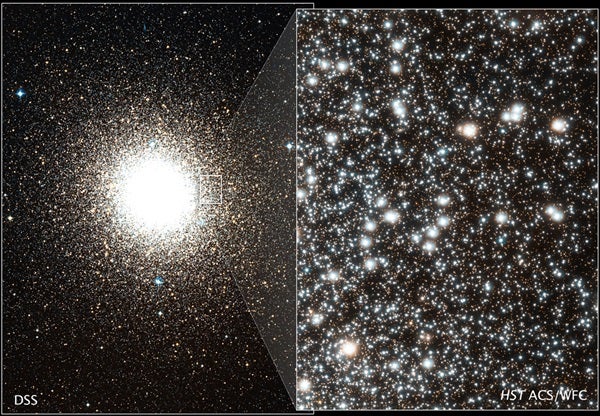Of the approximately 160 globular clusters that belong to the Milky Way, 47 Tucanae (NGC 104) stands out. Despite a distance of nearly 15,000 light-years, 47 Tuc shines at 4th magnitude, which places it second only to Omega Centauri (NGC 5139) among the galaxy’s globulars. If it didn’t lie in the far southern constellation Tucana, it would be a favorite target for northern amateur astronomers.
This video takes viewers on a voyage from Earth to 47 Tuc. It starts with an earthly view of the night sky centered approximately midway between the Large and Small Magellanic Clouds, two satellite galaxies of the Milky Way that lie approximately 20° apart. The video then homes in on 47 Tuc, which appears just 2° from the Small Cloud. (Despite the cluster’s proximity to the galaxy on the sky, the two are unrelated.) The video then plunges into the globular, targeting a region just outside the densely packed core. The final scene shows some 30,000 of the cluster’s stars.
Video credit: NASA/ESA/G. Bacon and M. Estacion (STScI)










